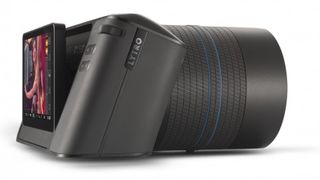TechRadar Verdict
It's great fun producing images that can be refocused, but there's a high cost and the images can only be viewed at fairly small size, but it's just possible that this is a taste of the future of photography.
Pros
- +
Huge fun to use
- +
Produces unique 'living images'
- +
Intuitive controls
Cons
- -
Expensive
- -
Rather awkward handling
- -
Small image size
Why you can trust TechRadar
Like Lytro's original Light Field Camera, the Illum is able to produce 'living images' which allow the user to shift the point of focus after the shot has been taken. It sounds incredible, but out of focus parts of the image really do become sharp before your eyes.
The finer details of the technology are obviously subject to much secrecy, but it involves a microlens array in front of the Illum's sensor which scatters the light in different directions depending upon the angle at which it entered the array. The Illum's processor uses the direction data gathered from the sensor to calculate how the light would have responded if the lens was focused at different points. This in turn enables the camera to generate different versions of the image with the focus at different distances.
Where regular cameras focus on a single plane and rely on depth of field to make objects nearer or further away look sharp, the Illum captures a zone of sharp focus which you can exploit later. The name, incidentally is pronounced 'Illume', as in a shortened version of 'Illuminate'.
Features
While the original Lytro camera had an 11-megaray sensor, the Illum has a 1/1.2-inch 40-megaray device. However, many of these 'megaray' sites are used in the distance/angle calculations and two-dimensional renderings of the images have just 4 million pixels. Nevertheless the files, which are produced in Lytro's raw format and stored on SDHC/SDXC media, are around 50-60MB in size.
All images are shot at an aperture of f/2.0 although shutter speed maybe varied within the range 1/4000-32 seconds and sensitivity can be varied from ISO 80 to 3200.

As aperture is fixed, there's no aperture priority mode, but there's a sensitivity priority (I) option in which you set the sensitivity value and the camera sets the shutter speed. Shutter priority, program and manual mode are also available.
The fixed lens has an 8x zoom range with a focal of 9.5-77.8mm, equivalent to 30-250mm in 35mm terms.
On the back of the camera is a 4-inch 384,000-dot capacitive touchscreen which, as there's no viewfinder, is used for composing and reviewing images as well as making settings adjustments. This is mounted on a tilting bracket which enables it to be angled up though 90 degrees and down through 10 degrees for easier viewing.

The Illum looks much more like a conventional camera than the original Light Field camera, but it still has a futuristic air about it that attracts attention and raises interest in anyone who sees it.

